Sigma 18-200 mm f/3.5-6.3 II DC OS HSM
8. Vignetting
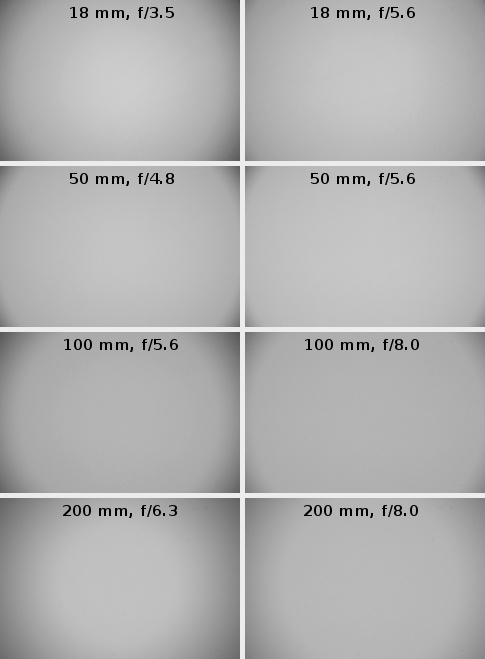
At the shortest focal length and by f/3.5 the brightness loss in the frame corners amounts to as much as 54% (-2.24 EV) – so is huge. On stopping down the aperture the situation still remains rather mediocre. By f/4.0 the vignetting is 48% (-1.87 EV) and by f/5.6 it reaches still a significant value of 33% (-1.18 EV). By f/8.0 the light fall-off gets to 27% (-0.91 EV) and on further stopping down you can’t see any noticeable decrease of this aberration.
Please Support UsIf you enjoy our reviews and articles, and you want us to continue our work please, support our website by donating through PayPal. The funds are going to be used for paying our editorial team, renting servers, and equipping our testing studio; only that way we will be able to continue providing you interesting content for free. |
- - - - - - - - - - - - - - - - - - - - - - - - - - - - - - - - - - - - - - - - - - - - - - - -
At 30 mm focal length the maximum relative aperture is f/4.0 and the vignetting amounts to 43% (-1.64 EV). On stopping down the aperture to f/5.6 the brightness loss in the frame corners reaches 27% (-0.93 EV) and by f/8.0 it gets to 20% (-0.66 EV). By f/11 and f/16 apertures the vignetting keeps the same level – that of 16-17%.
A very similar situation can be seen at 50 mm focal length. At the maximum relative aperture the light fall-off in the corners of the frame is 44% (-1.68 EV) and by f/5.6 it reaches 36% (-1.28 EV). In the case of f/8.0 and f/11 apertures the vignetting amounts to 23% and 15% respectively.
In the case of the 100 mm focal length and the maximum relative aperture the level of vignetting could be determined as 47% |(-1.86 EV). Applying the f/8.0 aperture allows us to decrease that aberration to the value of 31% (-1.07 EV) and by f/11 it amounts to 20% (-0.64 EV). The vignetting becomes imperceptible only by f/16, where it gets to the level of 10% (-0.32 EV).
The combination of the maximum focal length and the maximum relative aperture is not free of huge vignetting level - it reaches as high as 46% (-1.76 EV) there. By f/8.0 this aberration gets to 31% (-1.07 EV and by f/11 it is 18% (-0.56 EV). The problem disappears only by f/16 where the vignetting is just 9% (-0.26 EV).
To sum up: in this category small dimensions of the tested lens made themselves felt very keenly. The vignetting remains huge practically at every focal length; often even after stopping down you have to tackle its noticeable influence.
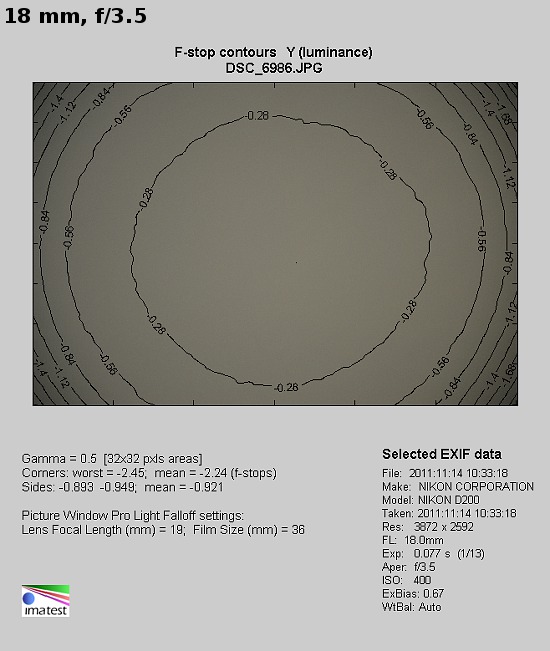 |
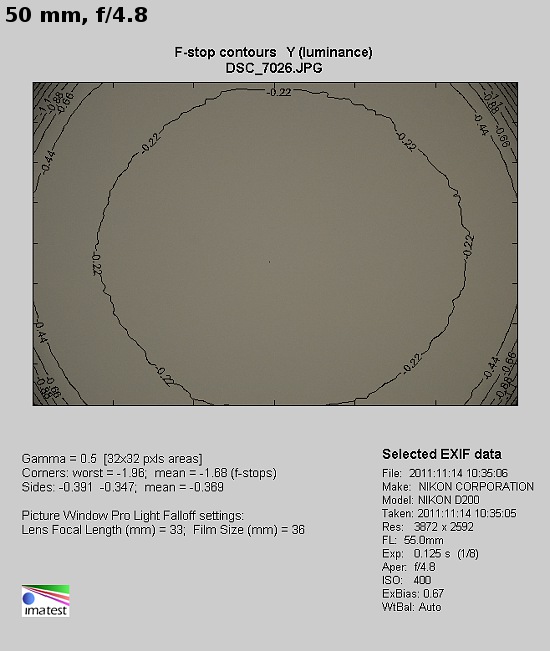 |
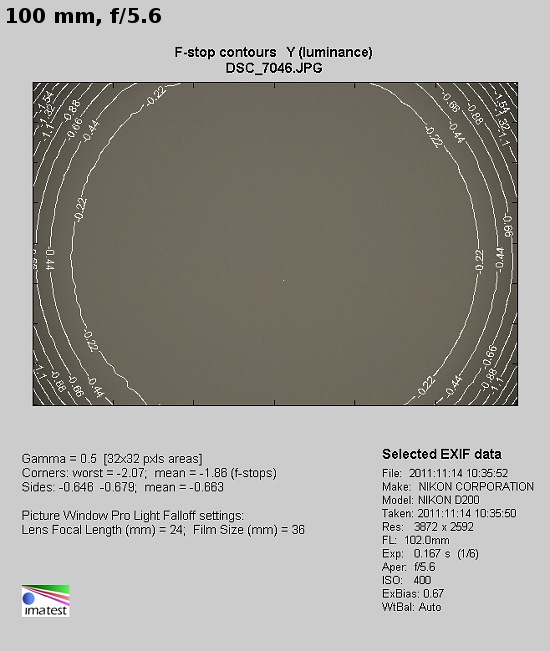 |
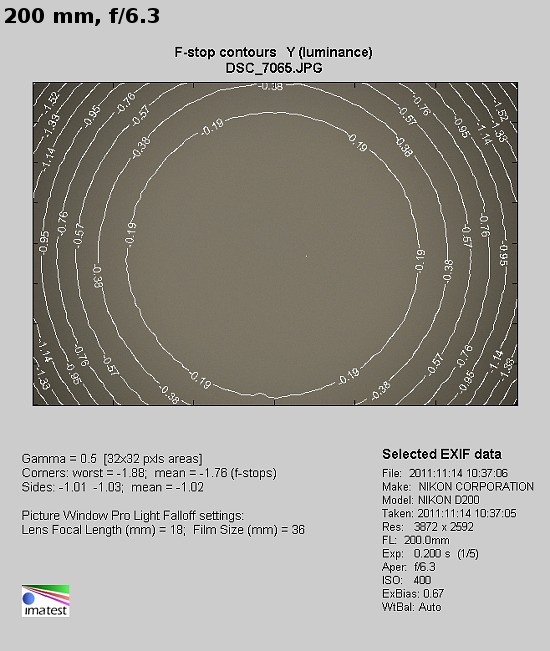 |






